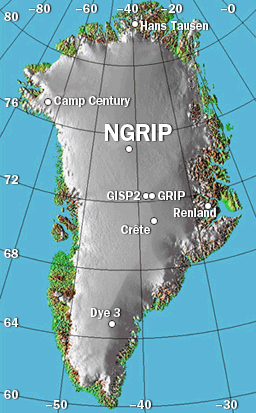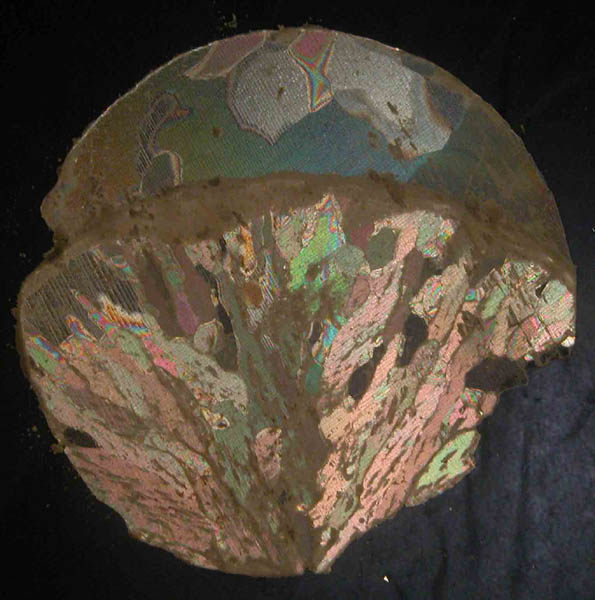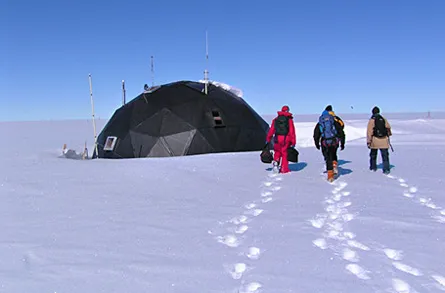- More than 2 years ago
Slicing into and studying ancient, Greenlandic ice, an international science team has now dissected the year-by-year anatomy of abrupt climate change events — the kind where typical Minnesotan weather can become Texan in merely four to five years.



“We, in modern society, have never seen abrupt climate change,” says James White, a paleoclimatologist at the University of Colorado at Boulder and one of the team members. “We would be dumbstruck if we went through it. We would be like, ‘Damn that was climate change’.”
According to ice core evidence, abrupt changes did occur thousands of years ago. Weather patterns changed in one to three years, and the amount of dust in the atmosphere decreased five-fold in less than four decades. That means, within 30 years, the climate change was complete, reports a new study published in ScienceXpress, the online supplement to the June 19 Science.
“This can only happen if the atmospheric circulation has made a significant and permanent change,” says University of Copenhagen paleoclimatologist Jørgen Peder Steffensen, who is lead author on the new paper. “The people living at that time would have noticed that winds and precipitation and temperatures over the seasons behaved completely different. The wind simply started to blow from another direction.”
Since ice core studies of Greenland began in the 1980s, researchers have known that abrupt shifts in climate can occur. Like crime scene investigators piecing together the event sequence of a murder, the scientists wanted to put together an event sequence that could have triggered such swift changes in Greenland’s past climate.
To identify those triggers, the scientists gathered ice core samples from the North Greenland Ice Core Project drilling site. Changes in temperature, moisture and atmospheric dust are recorded in the snow that falls, freezes and then compacts into the ice core’s yearly, millimeter- to centimeter-thick layers.
This is the first time a science team has been able to look
at ancient ice layers at yearly and sub-yearly increments, White says. None of
the deep Antarctic ice cores allow for a year by year resolution because it
snows too little at these sites. In Greenland
the snow layers are thick enough in several ice cores, but only in the last 10
years have measurement techniques been developed to analyze the samples in such
fine detail.
“We looked at ice year by year for a 3,000-year span. That
is a lot of data,” White says, “And like in forensics, we tried to tease out what
the causes and effects of the changes were.”
Looking at levels of dust, an isotope of oxygen called O-18 and one of hydrogen called deuterium, the team re-created a scenario that describes the onset of three, past abrupt climate change episodes in the northern hemisphere — from cold to warm, warm to cold and then cold to warm again —between 15,000 and 11,000 years ago.
Climate forensics
The new study finds that the last two major warming events — at 14,700 and 11,700 years ago — followed the same general pattern. The team also suggests that whatever triggered the swift, North Atlantic climate shifts may not even have begun near Greenland, but rather in the temperate regions of Asia.
Though the scientists didn’t pinpoint the exact trigger, based on the yearly changes in isotopes of oxygen and hydrogen found in the ice, they hypothesize that high southern latitudes and tropical oceans warmed because of decreases in North Atlantic air and water circulation. This tropical warming in the Southern Hemisphere could have induced the first northward shift of the juncture where Northeast and Southeast trade winds intersect.
When this wind stream contact point is pushed to its northernmost threshold, it sets off more intense Pacific monsoons, which lead to wetter conditions in Asia. Less dust is uplifted into the air and more particles wash out in the monsoonal rain, which means less dust falls in Greenlandic snow.
According to the ice record, dust levels shifted first when abrupt climate change began. Other atmospheric shifts followed, the new study reports. As past warming progressed, the ice showed quick, one-to-three–year shifts in levels of deuterium compared to normal hydrogen, marking abrupt changes in the atmospheric circulation of the Northern Hemisphere.
Those circulation changes took place where the water vapor for Greenlandic precipitation originated and could have caused North Atlantic sea ice to retreat north.
One- to three-year shifts in the ratio between O-18 and deuterium suggest that the sea ice brought with it warmer air and more moisture, so more snow fell in Greenland. The team recorded precisely these shifts in the isotopic ratios as well as in ice layer thickness.
Right now, White says, the scenario is speculative. “In the paper, we have stuck our neck out there, as you do in science,” he explains, “so others can go on and chop off our heads or propose other hypotheses.”
Sea ice and climate
The new data provide details that will further scientists’ understanding of how sea ice, coupled with atmospheric and oceanic circulations, affects climate. “So, this is great,” says PennsylvaniaStateUniversity paleoclimatologist Richard Alley, who was not involved in the study. The team’s idea is “provocative and consistent with the data,” he says, but both he and White agree that more data are needed to further test and understand the triggers of abrupt climate change in the Northern Hemisphere.
The measurements will also “put the ball back in climate modelers’ court,” White explains. Current global climate models cannot replicate abrupt climate changes that are as rapid as those recorded in the ice cores. “If you are looking at it like a disease, the symptoms don’t match,” so the input triggers in the models must be wrong, he adds. But by pinpointing triggers of abrupt climate change episodes of the past, he says, modelers can make better predictions of future episodes.
Could such a change happen today? “The IPCC [Intergovernmental Panel on Climate Change] gives at least 90 percent confidence that we won’t have any big, fast weirdness in the North Atlantic in the next century,” Alley says. “But, 90 percent is not 100 percent. Even a slight chance of drying of the monsoons and southward shift of the tropical circulation raises a whole lot of questions.”






